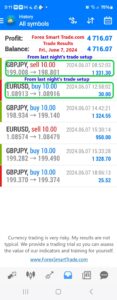Currencies tend to fall when their country’s domestic economic outlook worsens, but the U.S. dollar’s unique global role makes it special so when the U.S. economy isn’t doing great, the currency may still rise.
A helpful to look at why this is the case is to pretend there are two “types” of U.S. dollars.
- There is a “domestic” U.S. dollar that behaves like any other currency. It’s linked to the economy’s relative outlook and potential investment returns.
- There is also an “international” U.S. dollar that is used as the primary currency used in global trade (for payments). It is also needed to buy U.S. government bonds which are coveted for their safety.
This “international” U.S. dollar strengthens for a variety of reasons when markets are volatile and global growth slows.
When there is some sort of “shock” that happens, whether from the U.S. or abroad, and it’s big enough to cause investors and traders to panic and send financial markets lower.
Then it will likely cause the broad U.S. dollar to appreciate.
In fact, this really smart dude who used to work at Morgan Stanley came up with a theory to explain this phenomenon.





